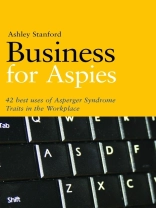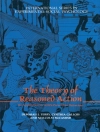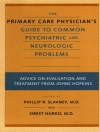Most workplaces are a frenzied swirl of social interaction – between employees and bosses, customers and clients, and anyone else present. People with a mental framework better suited to non-social tasks can often be overlooked and underutilised in such an environment, but this book explains exactly how those with Asperger Syndrome can get their talents recognised and become successful and indispensable employees.
Following the DSM system and an easy to use format, Ashley Stanford addresses all of the issues that can arise once a person with AS secures employment, through the eyes of both employee and employer. Describing what might be expected of any employee, she offers helpful tips and workarounds not only to enable AS individuals achieve their fullest potential, but to take advantage of their strengths. In a positive and upbeat tone, she shows that with the right supports and strategies, it is possible to overcome the day-to-day challenges that trip up even the most savvy Aspie, including negotiating pay rises, employer/employee relationships, team meetings, career advancement, and choosing when to take vacation time. Drawing on her experience as CEO of a computer software company, she also suggests steps that employers and managers can take to improve the working environment for people with AS, and take advantage of their strengths to enable them to become outstanding employees.
Business for Aspies will help people with AS take steps towards achieving happy, fulfilled and above all successful working lives. It will be of key interest to the employers, managers, partners, and families of people with AS.
İçerik tablosu
Preface. Introduction. 1. Baseline Starting Point for Building Your Career. Many Undiscovered Talents . Underestimating Aspies. Does Asperger Syndrome Limit You? The Flip Side of the Coin. 2. Executive Function. Organization Matters – Your Desk, Your Brain. When the Solution Is Avoiding the Problem. Now You See It; Now You Don’t. Organization of Events. Organization of Tasks. Beyond Organization – Maslow’s Pyramid for Aspies. 3. Social Interaction on the Job. Best Practice 1: Engaged and Safe. Best Practice 2: The Easier Friendship – Co-Workers. 4. Eye Contact and Reading Faces at Work. Best Practice 3: When Less Is More. Best Practice 4: Relaxing Your Eyes – Face Muting. Best Practice 5: Training Your Eyes – Mapping the Blank Face. Best Practice 6: The No Face-Time Flexibility Rule. Best Practice 7: Building Skills for Ultimate Flexibility – Removing the Pressure for In-Person Work. 5. Body Postures and Gestures on the Job. Best Practice 8: ‘Quiet’ Posture. Best Practice 9: Mimic Other Successful Professionals. Best Practice 10: Professional Restrictions to the Rescue. 6. The People You Work With . Best Practice 11: The Back-Stabber, the Drama Queen, and the Glory Hog. Best Practice 12: Your Relationship with Your Boss. Best Practice 13: ‘Get a Life!’ 7. Do I Enjoy My Job? Best Practice 14: Make Your Enjoyment Obvious. Best Practice 15: Test Check for Happiness on the Job. Best Practice 16: Avoiding the Biggest Pitfall – Abdicating Free Will. Best Practice 17: Career Trajectory. 8. Your Most Valuable Traits . Best Practice 18: Know Your Strengths. Best Practice 19: How You Help Your Team Focus. Best Practice 20: The One Who Retains His Job When the Rest Are Fired. Best Practice 21: Respecting Yourself . 9. Your Position in the Company – Building It and Keeping It. Best Practice 22: Behaving Like the Boss, i.e. Someone Well-Paid. Best Practice 23: Ask for Help – The 42 Best Practice Notebook. Best Practice 24: Brainspace. Best Practice 25: Securing Your Job and Scoring a Raise. Best Practice 26: Motivation Matters. Best Practice 27: The Halo Effect – Avoid It. 10. Issues of Flexibility and Routine. Best Practice 28: Stability . Best Practice 29: Loyalty. Best Practice 30: Trust. Best Practice 31: Keeping the Machine Running. 11Your Sensory System at Work. Best Practice 32: Every BODY Needs Something Different. Best Practice 33: Building Support. Best Practice 34: Channeling Sensory Needs into Career Needs. 12. Unique Aspie Preoccupations on the Job. Best Practice 35: The Manager and the Builder. Best Practice 36: Neurotypical Meetings and Aspie Survival. Best Practice 37: Well-Rounded Is Not the Goal – Let Your Freak Flag Fly. 13. Who You Are at Work. Best Practice 38: The Thoughtful Pause, a Sign of Wisdom. Best Practice 39: Shift Expectations Internally and at Work . Best Practice 40: Creating a Trustworthy Persona at Work. Best Practice 41: When ‘Othering’ Happens at Work. Best Practice 42: Asserting Your Opinion Confidently Without Being Labeled Narcissistic or Otherwise Unpleasant. 14. Safety, Survival, and Ultimate Success. The Safety Point. Survival Toolkit Top 10. Aspie Bill of Rights – General. Aspie Bill of Rights – Workplace. Summary. References. Further Reading. About the Author. Index
Yazar hakkında
Ashley Stanford has worked as a technical writer for 16 years and is the CEO of a successful computer software company. She is the author of Asperger Syndrome and Long-Term Relationships, also published by Jessica Kingsley Publishers. She lives in Berkeley, California.












